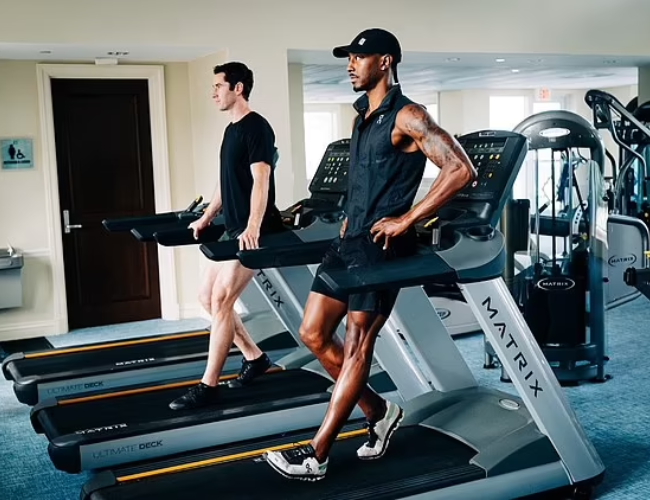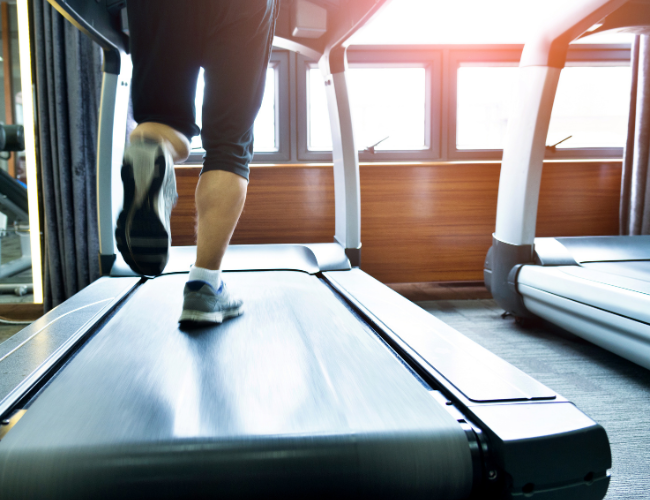If you’re someone who’s always on the lookout for new ways to improve your physical health and fitness, then you might want to consider adding backward walking to your workout routine.
This form of exercise has been gaining popularity in recent years, thanks to its numerous benefits for joint health, balance, coordination, and overall fitness.
In this article, we’ll explore why backward walking is such a beneficial exercise, who can benefit from it, and how you can safely incorporate it into your workout regimen.

The Benefits of Backward Walking
Backward walking, also known as retro walking or reverse walking, may seem like a strange and unusual exercise at first. However, it offers several unique benefits that traditional forward walking cannot provide. Let’s take a closer look at some of these benefits:
Improved Joint Health
Walking backward can help improve joint health by reducing tension and stress on the joints. When you walk forward, your body weight is primarily transferred to your front leg, which can lead to increased pressure and strain on your knees, hips, and ankles over time.
By walking backward, you shift your weight to your rear leg, distributing the load more evenly across your body and reducing the impact on your joints.
Enhanced Balance and Coordination
Walking backward requires greater concentration, balance, and coordination than walking forward. This is because you’re moving in an unfamiliar direction, and your brain has to work harder to process and coordinate the movement of your limbs.
Over time, this can improve your overall balance, coordination, and proprioception (your body’s ability to sense its position and movements in space).
Increased Cardiovascular Fitness

Backward walking can be a surprisingly effective cardiovascular workout. Because you’re working your muscles in a different way than you would when walking forward, you may find that your heart rate increases more quickly and stays elevated for longer periods.
This can lead to improved cardiovascular fitness and endurance over time.
Strengthened Muscles
Walking backward engages different muscles than walking forward. In particular, it targets your glutes, hamstrings, and calves more intensely, which can lead to increased muscle strength and tone.
Additionally, because backward walking requires greater balance and coordination, it engages more stabilizing muscles throughout your body.
Reduced Risk of Injury
Finally, walking backward may help reduce your risk of injury by improving joint health, balance, and coordination. It can also be a useful exercise for people recovering from certain injuries or surgeries, as it places less stress on the affected joints than forward walking.
How to Add Backward Walking into Your Workout Routine?
If you’re interested in adding backward walking to your workout routine, here are some tips to get started:
Start Slowly
As with any new exercise, it’s important to start slowly and gradually build up your intensity and duration over time. Begin with short intervals of backward walking, such as 30 seconds to one minute at a time, and gradually increase your time as you feel more comfortable.
Find a Safe Location

Choose a safe location to walk backward, preferably one with a flat surface that’s free of obstacles or hazards. You may want to practice in a gym or fitness center with a trainer or physical therapist who can provide guidance and support.
Use Proper Form
When walking backward, keep your head up and your gaze focused on where you’re going. Keep your feet shoulder-width apart and take small steps, lifting your feet just high enough to clear the ground. Swing your arms naturally to help maintain your balance.
Incorporate Backward Walking into Your Workouts
There are several ways to incorporate backward walking into your workouts, depending on your fitness level and goals. Here are a few ideas:
- Warm-up: Use backward walking as a warm-up exercise before your regular workout.
- Interval Training: Alternate between forward and backward walking intervals during your cardio workout.
- Strength Training: Incorporate backward walking lunges, squats, or leg lifts into your strength training routine.
- Cool Down: Use backward walking as a cool-down exercise after your regular workout.
Conclusion
Backward walking may seem like an unusual exercise, but it offers numerous benefits for joint health, balance, coordination, muscle strength, and cardiovascular fitness. By incorporating backward walking into your workout routine, you can improve your overall physical health and well-being.
Remember to start slowly, use proper form, and find a safe location to practice this unique and rewarding exercise. With time and patience, you may find that backward walking becomes an essential part of your fitness regimen.



















